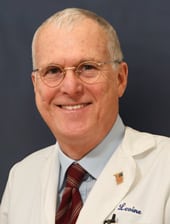A simple lapse in communication in a Texas hospital resulted in a patient with a deadly contagious disease being discharged home. The information regarding the patient’s travel history was recorded into the electronic medical record (EMR) by a nurse but not transmitted to the doctor who made the decision to discharge him. Such an error seems difficult to comprehend, but this type of communication mishap happens frequently with pressure ulcers.
 The oversight occurred at Texas Presbyterian Hospital in Dallas which is a large and busy place. According to US News and World Report this non-profit 609 bed hospital had over 83,000 ER visits and 24,000 admissions in a recent year. The hospital is highly rated, with 74% of patients giving this hospital either 9 or 10 out of 10, the best possible score. Texas Presbyterian uses an EMR called Epic, a market leader in health information technology that is used by some of the nation’s largest and most prestigious health care systems. According to an article in Healthcare Economics, 40% of Americans have their healthcare information stored on Epic.
The oversight occurred at Texas Presbyterian Hospital in Dallas which is a large and busy place. According to US News and World Report this non-profit 609 bed hospital had over 83,000 ER visits and 24,000 admissions in a recent year. The hospital is highly rated, with 74% of patients giving this hospital either 9 or 10 out of 10, the best possible score. Texas Presbyterian uses an EMR called Epic, a market leader in health information technology that is used by some of the nation’s largest and most prestigious health care systems. According to an article in Healthcare Economics, 40% of Americans have their healthcare information stored on Epic.
The hospital initially blamed the slip-up on a flaw in the EMR, but later reversed its position. Apparently the information that recorded the patient’s travel history was correctly entered, but because of “separate physician and nursing workflows” the information did not get to the doctors who discharged the patient home. The result was a potential epidemiological disaster, with many people unnecessarily exposed to a highly contagious and deadly disease and a patient who was left untreated for several days.
This phenomenon of “separate physician and nursing workflows” is unfortunately common in the care of pressure ulcers. Many nurses work hard at assessing skin, but often the physician doesn’t get the information and the wound goes inadequately documented and treated. There are many reasons for this. Wound care is not well represented in medical education, and despite the evolving standard that requires physician documentation and treatment orders, many doctors see wound care as a low priority. Pressure ulcers often go unexamined and poorly incorporated into the physician’s plan of care.
Quality pressure ulcer care entails examination and documentation, but too often we encounter the barrier of “separate physician and nursing workflows” that inhibits communication and proper transfer of information. When a patient is admitted with a wound, the physician needs to know about it and examine it. When a patient gets a new wound in the hospital, the same applies. But for the nurse, simply entering the information into the record with the assumption that the physician will read it is not enough.
According to a landmark report on medical mishaps by the Institute of Medicine, errors represent places where the system failed and the breakdown resulted in harm. For Thomas Duncan who died of Ebola in Texas, the system failed. The nurse who entered the information into the EMR could simply have spoken directly to the doctor to communicate the critical travel history in addition to typing it into the computer. This principle works both ways, and doctors need to listen to the information and incorporate it into their assessment and plan. The same applies to a patient who is admitted to the hospital with a pressure ulcer, gets a new one during the hospital stay, or has a wound that is deteriorating.
Any EMR that reinforces professional silos is basically flawed, and entry of data into a computer should never be a substitute for direct communication – the most basic element of interdisciplinary collaboration that is an essential component of pressure ulcer care.
* * * * * * * * * * * * * * *
Related posts:
Pressure Ulcers as “Never Event”: Fact or Myth?
Determining the Avoidability of Pressure Ulcers
How CMS Views Pressure Ulcers in Hospitals
.
